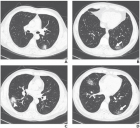Abstract
Review Article
Review of Stereotactic and Neuronavigation Brain Biopsy Methods in the Dog
Felipe AS Abreu* and Samuel T Zymberg
Published: 01 November, 2018 | Volume 2 - Issue 1 | Pages: 027-033
Objective: To perform a review of brain biopsies in the canine species and determine if it is possible to compare the stereotactic and neuronavigation results.
Method: A search was performed in NCBI’s PubMed database for stereotactic or neuronavigational canine brain biopsy publications and articles which met at least one of the inclusion criteria and not any of the exclusion criteria were selected. The inclusion criteria were: 1) assessment of the specificity of the biopsy, 2) assessment of system accuracy, 3) assessment of the biopsy results, and 4) duration of the procedure.
Results: Only one article met all the inclusion criteria. Eleven articles that partially met the criteria were used for comparison. Authors used different stereotaxic methods and two used neuronavigation equipment. The authors of the stereotactic studies either adapted devices from human medicine or developed their own devices; the level of accuracy was variable (errors of 0.0 mm to 5.1 mm), and the two articles that used animals with spontaneous lesions had a diagnostic specificity rate higher than 90 percent. The accuracy of the neuronavigation studies was approximately 3.3 mm; however, no live animals were used.
Conclusions: It was not possible to properly compare stereotactic and neuronavigation techniques. To do so, the methodologies and the assessed parameters need to be standardized.
Read Full Article HTML DOI: 0.29328/journal.ivs.1001011 Cite this Article Read Full Article PDF
References
- Moore MP, Bagley RS, Harrington ML, Gavin PR. Intracranial tumors. Vet Clin N Am-Small. 1996; 26: 759-777. Ref.: https://goo.gl/iYbM3v
- Koblik PD, LeCouteur RA, Higgins RJ, Fick J, Kortz GD, et al.: Modification and application of a pelorus mark III stereotactic system for CT-guided brain biopsy in 50 dogs. Vet Radiol Ultrasoun. 1999a; 40: 424-433. Ref.: https://goo.gl/1k5QFZ
- Moissonnier P, Bordeau W, Delisle F, Devauchelle P. Accuracy testing of a new stereotactic CT-guided brain biopsy device in the dog. Res Vet Sci. 2000; 68: 243-247. Ref.: https://goo.gl/thfh7s
- Moissonnier P, Blot S, Devauchelle P, Delisle F, Beuvon F, et al. Stereotactic CT-guided brain biopsy in the dog. J Small Anim Pract. 2002; 43: 115-123. Ref.: https://goo.gl/4hAhcP
- Troxel MT, Vite CH. CT-guided stereotactic brain biopsy using the kopf stereotactic system. Vet Radiol Ultrasoun. 2008; 49(5): 438-443. Ref.: https://goo.gl/qZH3Qc
- Synge BA. Brain biopsy for the diagnosis of heartwater. Trop. Anim. Hlth Prod. 1978; 10: 45-48. Ref.: https://goo.gl/DZ3ZnF
- Van Amstel SR. The use of electroencephalography and brain biopsy in the clinical diagnosis of heartwater. Onderstepoort J Vet Res. 1987; 54: 295-299. Ref.: https://goo.gl/mt885q
- Vanschandevijl K, Gielen I, Nollet H, Vlaminck L, Deprez P, et al. Computed tomography-guided brain biopsy for in vivo diagnosis of a cholesterinic granuloma in a horse. J Am Vet Med Assoc. 2008; 233: 950–954. Ref.: https://goo.gl/T9s3bj
- Flegel T, Oevermann A, Oechtering G, Matiasek K. Diagnostic yield and adverse effects of MRI-guided free-hand brain biopsies through a mini-burr hole in dogs with encephalitis. J Vet Intern Med 2012; 26: 969–976. Ref.: https://goo.gl/KYK9cR
- Thomas WB, Sorjonen DC, Hudson JA, Cox NR. Ultrasound-guided brain biopsy in dogs. Am J Vet Res. 1993; 54: 1942-1974. Ref.: https://goo.gl/MqjHyk
- Koblik PD1, LeCouteur RA, Higgins RJ, Bollen AW, Vernau KM, et al. CT-guided brain biopsy using a modified pelorus mark III stereotactic system: experience with 50 dogs. Vet Radiol Ultrasoun. 1999b; 40: 434-440. Ref.: https://goo.gl/pfwUEF
- Añor S1, Sturges BK, Lafranco L, Jang SS, Higgins RJ, et al. Systemic Phaeohyphomycosis (Cladophialophora bantiana) in a Dog—Clinical Diagnosis with Stereotactic Computed Tomographic-Guided Brain Biopsy. J Vet Intern Med. 2001; 15: 257–261. Ref.: https://goo.gl/HvYtns
- Giroux A, Jones JC, Bøhn JH, Duncan RB, Waldron DR, et al. A new device for stereotactic CT-guided biopsy of the canine brain: design, construction and needle placement accuracy. Vet Radiol Ultrasoun. 2002; 43: 229-236. Ref.: https://goo.gl/JcWwr1
- Flegel T, Podell M, March PA, Chakeres DW. Use of a disposable real-time CT stereotactic navigator device for minimally invasive dog brain biopsy through a mini-burr hole. Am J Neuroradiol. 2002; 23: 1160-1163. Ref.: https://goo.gl/owqjQM
- Bjarkam CR, Cancian G, Glud AN, Ettrup KS, Jørgensen RL, et al. MRI-guided stereotaxic targeting in pigs based on a stereotaxic localizer box fitted with an isocentric frame and use of SurgiPlan computer-planning software. J Neurosci Meth. 2009; 183: 119-126. Ref.: https://goo.gl/pseu9y
- Squires AD, Gao Y, Taylor SF, Kent M2, Tse ZT. A Simple and inexpensive stereotactic guidance frame for MRI-guided brain biopsy in canines. J Med Eng. 2014; 139535. Ref.: https://goo.gl/AiZsPM
- Packer RA, Freeman LJ, Miller MA, Fauber AE, Morrison WB. Evaluation of minimally invasive excisional brain biopsy and intracranial brachytherapy catheter placement in dogs. Am J Vet Res. 2011; 72: 109–121. Ref.: https://goo.gl/pgpFnU
- Rossmeisl JH, Andriani RT, Cecere TE, Lahmers K, LeRoith T, et al. Frame-based stereotactic biopsy of canine brain masses: technique and clinical results in 26 cases. Front Vet Sci. 2015; 2: 1-13. Ref.: https://goo.gl/LzHTnE
- Sidhu DS, Ruth JD, Lambert G3, Rossmeisl JH. An easy to produce and economical three-dimensional brain phantom for stereotactic computed tomographic-guided brain biopsy training in the dog. Vet Surg. 2017; 46: 621-630. Ref.: https://goo.gl/3MUZpQ
- Chen AV, Wininger FA, Frey S, Comeau RM, Bagley RS, et al. Description and validation of a magnetic resonance imaging-guided stereotactic brain biopsy device in the dog. Vet Radiol Ultrasoun. 2012; 53: 150-156. Ref.: https://goo.gl/FsVLUB
- Taylor AR, Cohen ND, Fletcher S, Griffin JF, Levine JM. Application and machine accuracy of a new frameless computed tomography-guided stereotactic brain biopsy system in dogs. Vet Radiol Ultrasoun, 2013; 54(4): 332–342. Ref.: https://goo.gl/djr9Yf
- Staudacher A, Oevermann A, Stoffel MH, Gorgas D. Validation of a magnetic resonance imaging-guided stereotactic access to the ovine brainstem. BMC Vet Res. 2014; 10: 216: 1-8. Ref.: https://goo.gl/EZvbzm
- Horsley V, Clarke RH. The structure and functions of the cerebellum examined by a new method. Brain. 1908; 31: 45-124. Ref.:https://goo.gl/KfrMPj
- Compston A. Editorial. Brain 2007; 130: 881-883. Ref.: https://goo.gl/V46fRj
- Atallah AN, Castro AA. Revisão Sistemática e Metanálises [portuguese], in: Evidências para melhores decisões clínicas. São Paulo, SP. Lemos Editorial 1998; 20-28.
- Neumann JO, Campos B, Younes B, Jakobs M, Jungk C, et al.: Frame-based stereotactic biopsies using an intraoperative MR-scanner are as safe and effective as conventional stereotactic procedures. PLoS ONE. 2018; 13: e0205772. Ref.: https://goo.gl/2k5pbr
- Woodworth GF, McGirt MJ, Samdani A, Garonzik I, Olivi A, et al. Frameless image-guided stereotactic brain biopsy procedure: diagnostic yield, surgical morbidity, and comparison with the frame-based technique. J Neurosurg. 2006 104: 233–237. Ref.: https://goo.gl/fvXwM5
Figures:

Figure 1

Figure 2
Similar Articles
-
Exploring novel medical applications for commonly used veterinary drug (tilmicosin antibiotic)Fatma I Abo El-Ela*,El-Banna HA. Exploring novel medical applications for commonly used veterinary drug (tilmicosin antibiotic). . 2017 doi: 10.29328/journal.ivs.1001001; 1: 001-016
-
Investigation on Theileria lestoquardi infection among sheep and goats in Nyala, South Darfur State, SudanOsman TM,Ali AM*,Hussein MO,El Ghali A,Salih DA. Investigation on Theileria lestoquardi infection among sheep and goats in Nyala, South Darfur State, Sudan. . 2017 doi: 10.29328/journal.ivs.1001002; 1: 017-023
-
Mechanism-related Teratogenic, Hormone Modulant and other Toxicological effects of Veterinary and agricultural surfactantsAndrás Székács*. Mechanism-related Teratogenic, Hormone Modulant and other Toxicological effects of Veterinary and agricultural surfactants. . 2017 doi: 10.29328/journal.ivs.1001003; 1: 024-031
-
Efficacies of 11% Lactoferricin and 0.05% Chlorhexidine Otological Solution compared, in the treatment of microbial otic overgrowth: A randomized single blinded studyLuisa Cornegliani*,Federico Leone,Francesco Albanese,Mauro Bigliati,Natalia Fanton,Antonella Vercelli. Efficacies of 11% Lactoferricin and 0.05% Chlorhexidine Otological Solution compared, in the treatment of microbial otic overgrowth: A randomized single blinded study. . 2017 doi: 10.29328/journal.ivs.1001004; 1: 032-041
-
Ocular surface Rose Bengal staining in normal dogs and dogs with Keratoconjunctivitis Sicca: Preliminary findingsWilliams DL*,Griffiths A. Ocular surface Rose Bengal staining in normal dogs and dogs with Keratoconjunctivitis Sicca: Preliminary findings. . 2017 doi: 10.29328/journal.ivs.1001005; 1: 042-046
-
Influence of Vitamin E on the Disposition Kinetics of Florfenicol after single and multiple oral administrations in Broiler ChickensFatma Ibrahim Abo El-Ela*,Hossny Awad El-Banna,Manal B El-Deen,Tohamy MA. Influence of Vitamin E on the Disposition Kinetics of Florfenicol after single and multiple oral administrations in Broiler Chickens. . 2017 doi: 10.29328/journal.ivs.1001006; 1: 047-057
-
Effects of carazolol on electrocadiographic and trace element status in sheepsRemzi Gonul,Lora Koenhemsı,Handan Aydın Vural*,Tevfik Gulyasar,Hasret Demırcan Yardıbı,Erman OR,Bora Barutcu. Effects of carazolol on electrocadiographic and trace element status in sheeps. . 2018 doi: 10.29328/journal.ivs.1001007; 2: 001-004
-
Livestock insurance a tool to reduce economical loss of farmers from climate change related HazardsAnanta Koirala*,Priyanka Bhandari. Livestock insurance a tool to reduce economical loss of farmers from climate change related Hazards. . 2018 doi: 10.29328/journal.ivs.1001008; 2: 005-008
-
The failure to provide an effective veterinary service to sheep in AustraliaJAL Maxwell*. The failure to provide an effective veterinary service to sheep in Australia. . 2018 doi: 10.29328/journal.ivs.1001009; 2: 009-017
-
Does Veterinary Science have a future in Australia?JAL Maxwell*. Does Veterinary Science have a future in Australia?. . 2018 doi: 10.29328/journal.ivs.1001010; 2: 018-026
Recently Viewed
-
COVID-19, Long COVID, and Gastrointestinal Neoplasms: Exploring the Impact of Gut Microbiota and Oncogenic InteractionsAmália Cinthia Meneses do Rêgo,Irami Araújo-Filho*. COVID-19, Long COVID, and Gastrointestinal Neoplasms: Exploring the Impact of Gut Microbiota and Oncogenic Interactions. Arch Cancer Sci Ther. 2024: doi: 10.29328/journal.acst.1001045; 8: 054-062
-
Comparative Analysis of Water Wells and Tap Water: Case Study from Lebanon, Baalbeck RegionChaden Moussa Haidar, Ali Awad, Walaa Diab, Farah Kanj, Hassan Younes, Ali Yaacoub, Marwa Rammal, Alaa Hamze. Comparative Analysis of Water Wells and Tap Water: Case Study from Lebanon, Baalbeck Region. Insights Vet Sci. 2024: doi: 10.29328/journal.ivs.1001043; 8: 018-027
-
Investigating the Effect of the Family-Centered Empowerment Model (FCEM) on the Empowerment Indicators of Student Girls with Iron Deficiency Anemia (IDA) and Their MothersFatemeh Alhani,Hasan Navipor,Fatemeh Sadat Seyed Nematollah Roshan*. Investigating the Effect of the Family-Centered Empowerment Model (FCEM) on the Empowerment Indicators of Student Girls with Iron Deficiency Anemia (IDA) and Their Mothers. Insights Depress Anxiety. 2025: doi: 10.29328/journal.ida.1001045; 9: 017-024
-
Germline BRCA1 Mutation inSquamous Cell Carcinoma of Oesophagus: Driver versus Passenger MutationAmrit Kaur Kaler*, Shraddha Manoj Upadhyay, Nandini Shyamali Bora, Ankita Nikam, Kavya P, Nivetha Athikeri, Dattatray B Solanki, Imran Shaikh, Rajesh Mistry. Germline BRCA1 Mutation inSquamous Cell Carcinoma of Oesophagus: Driver versus Passenger Mutation. J Genet Med Gene Ther. 2024: doi: 10.29328/journal.jgmgt.1001011; 7: 015-019
-
Accessory Splenic Mass Masquerading as Hepatocellular Carcinoma: A Diagnostic DilemmaSoe P Winn*, Tharun Shyam, M Isabel Fiel, Yiwu Huang. Accessory Splenic Mass Masquerading as Hepatocellular Carcinoma: A Diagnostic Dilemma. Arch Cancer Sci Ther. 2024: doi: 10.29328/journal.acst.1001042; 8: 037-040
Most Viewed
-
Causal Link between Human Blood Metabolites and Asthma: An Investigation Using Mendelian RandomizationYong-Qing Zhu, Xiao-Yan Meng, Jing-Hua Yang*. Causal Link between Human Blood Metabolites and Asthma: An Investigation Using Mendelian Randomization. Arch Asthma Allergy Immunol. 2023 doi: 10.29328/journal.aaai.1001032; 7: 012-022
-
Impact of Latex Sensitization on Asthma and Rhinitis Progression: A Study at Abidjan-Cocody University Hospital - Côte d’Ivoire (Progression of Asthma and Rhinitis related to Latex Sensitization)Dasse Sery Romuald*, KL Siransy, N Koffi, RO Yeboah, EK Nguessan, HA Adou, VP Goran-Kouacou, AU Assi, JY Seri, S Moussa, D Oura, CL Memel, H Koya, E Atoukoula. Impact of Latex Sensitization on Asthma and Rhinitis Progression: A Study at Abidjan-Cocody University Hospital - Côte d’Ivoire (Progression of Asthma and Rhinitis related to Latex Sensitization). Arch Asthma Allergy Immunol. 2024 doi: 10.29328/journal.aaai.1001035; 8: 007-012
-
An algorithm to safely manage oral food challenge in an office-based setting for children with multiple food allergiesNathalie Cottel,Aïcha Dieme,Véronique Orcel,Yannick Chantran,Mélisande Bourgoin-Heck,Jocelyne Just. An algorithm to safely manage oral food challenge in an office-based setting for children with multiple food allergies. Arch Asthma Allergy Immunol. 2021 doi: 10.29328/journal.aaai.1001027; 5: 030-037
-
Snow white: an allergic girl?Oreste Vittore Brenna*. Snow white: an allergic girl?. Arch Asthma Allergy Immunol. 2022 doi: 10.29328/journal.aaai.1001029; 6: 001-002
-
Cytokine intoxication as a model of cell apoptosis and predict of schizophrenia - like affective disordersElena Viktorovna Drozdova*. Cytokine intoxication as a model of cell apoptosis and predict of schizophrenia - like affective disorders. Arch Asthma Allergy Immunol. 2021 doi: 10.29328/journal.aaai.1001028; 5: 038-040

If you are already a member of our network and need to keep track of any developments regarding a question you have already submitted, click "take me to my Query."


















































































































































